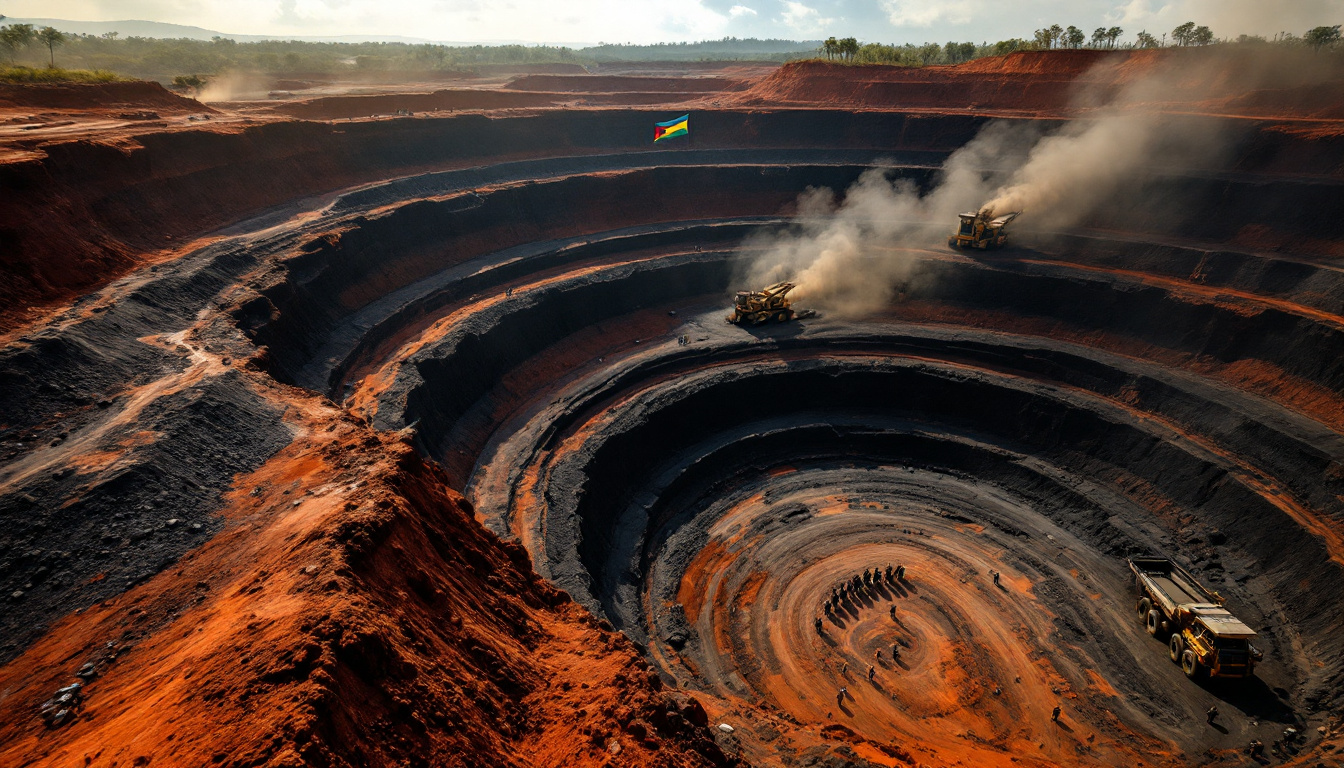What Is Bismuth and Why Is It Important?
Bismuth, a silvery-white metallic element with a distinctive pinkish tinge, occupies a critical niche in global industrial supply chains. Its unique physical properties, including a low melting point and exceptional conductivity, have attracted renewed interest amid rising concerns related to bismuth prices and china export restrictions.
It finds applications across diverse industries such as pharmaceuticals, automotive manufacturing, electronics, cosmetics, and defence. Furthermore, the metal’s environmentally friendly properties make it an attractive substitute for more toxic elements. As industries globally reassess supply chains, natural demand exists for stable sources of bismuth.
Materials scientist Dr Wei Zhang states, "Bismuth's unique properties make it virtually irreplaceable in certain applications." This quote underlines its significance and highlights the strategic importance of reliable bismuth supplies worldwide.
How Have China's Export Restrictions Impacted Bismuth Prices and China Export Restrictions?
The global market underwent a dramatic transformation when China introduced export controls in early February 2025. Consequently, bismuth prices and china export restrictions became a discussion point as prices experienced unprecedented volatility.
Within six weeks, prices surged nearly 500%, rising from $6 per pound before February 4 to almost $35 by mid-March 2025. This move represents one of the most dramatic commodity price movements witnessed recently, overshadowing even the fluctuations of lithium and rare earth markets.
Commodity analyst Sarah Henderson remarks, "We've never seen bismuth move like this before." Her statement accentuates the scale of the shift and the shock experienced by industrial users who found themselves unprepared.
Additionally, this period of instability has forced many to examine the underlying dynamics of bismuth prices and china export restrictions. bismuth price surge analyses indicate that speculative behaviour has further strained an already limited supply.
What Triggered China's Export Controls on Bismuth?
Beijing's decision to impose export restrictions in February 2025 was a calculated response to escalating trade tensions. In addition, it was linked to US policies, particularly when President Trump announced an initial 10% tariff on Chinese goods.
For instance, discussions on trump's trade policies often refer to this tipping point. Such measures prompted China to add strategic materials like tungsten, molybdenum, indium, and tellurium to its controlled list.
Dr Michael Chen, an international trade expert, explains, "China's export restrictions represent strategic leverage rather than just economic retaliation." His insight captures the essence of the policy's impact on sensitive global supply chains, reinforcing concerns over bismuth prices and china export restrictions.
How Have Global Bismuth Supply Chains Been Affected?
The supply chain for bismuth has not been immune to disruption. China’s exports plummeted to just 458 tonnes in February 2025, far below the previous monthly average of around 1,000 tonnes. Consequently, industries faced significant production challenges.
The United States, obtaining approximately two-thirds of its bismuth from China, now faces acute vulnerability. In addition, nations reliant on recycled alloys and secondary imports have felt the stress, as the limited supply has led to severe shortages.
Supply chain analyst Jennifer Wilson observes, "What we're seeing is a global bismuth supply chain in disarray." This tragic alignment of events underscores the strategic risks in maintaining concentrated production centres and highlights the ongoing issues related to bismuth prices and china export restrictions.
What Are the Long-Term Implications of China's Export Restrictions?
While the initial outcome was dramatic price spikes, the long-term implications remain complex. High prices have sparked innovation and prompted manufacturers to explore substitute materials. For instance, some are researching gallium-based alternatives for low melting applications.
Dr Robert Tanner, a materials engineer, states, "When prices increase this dramatically, innovation follows." His comment reinforces the potential for permanent shifts in industry practices and reduced dependence on bismuth sourced from China.
In addition, investor interest in non-Chinese bismuth producers has surged. Mining projects in Canada, Vietnam, and Bolivia are now receiving increased attention. The renewed investment focus may eventually alter the global supply balance while challenging bismuth prices and china export restrictions.
How Are Countries Responding to Critical Mineral Supply Concerns?
President Trump invoked emergency powers through the Defense Production Act to boost domestic critical mineral production. Bismuth was specifically named in this move, signalling its strategic importance. Furthermore, this action has encouraged governments to invest in alternative production sources.
The initiative builds upon earlier support seen under the Biden administration. government efforts to boost domestic critical mineral production have been instrumental in driving change. Consequently, new government-backed funding is accelerating exploration and development projects in North America and beyond.
In Europe, similar measures are underway as policymakers add bismuth to the critical raw materials list. They plan to secure stable supplies through international partnerships and subsidies. This multi-pronged strategy aims to mitigate the risks associated with bismuth prices and china export restrictions.
Addressing the Challenge of Limited Supply
Manufacturers and governments alike are resorting to diversified measures. The key initiatives include:
1. Stockpiling Programs:
- Governments are increasing reserves to combat future supply shocks.
- These efforts target multiple critical minerals for strategic resilience.
2. Investment in Alternative Sources:
- Private sector investments in non-Chinese mining projects are growing.
- Strategic alliances are forming, as seen in projects in Canada and Vietnam.
3. Research into Substitute Materials:
- Increased R&D is focused on identifying alternatives to bismuth.
- Investments in material science innovation are set to transform traditional supply chains.
This multi-layered approach is a direct consequence of the challenges posed by bismuth prices and china export restrictions, providing benchmarks for future policy responses.
What Other Critical Metals Face Similar Supply Challenges?
Bismuth is not alone in its struggle against export restrictions. Antimony, for example, has experienced a 300% price increase over the last year as a consequence of similar controls. Moreover, materials like tungsten, molybdenum, indium, and tellurium share analogous supply vulnerabilities.
Mining industry consultant Maria Rodriguez explains, "We're seeing a pattern where China is strategically restricting exports of materials where they have dominant market positions." Her analysis extends the conversation beyond bismuth prices and china export restrictions to a broader range of strategic materials.
These dynamics have led to market shifts elsewhere as well. For instance, after export quotas were introduced on tungsten, significant investment flowed into new resource development in countries like Australia and Canada. navigating the critical minerals race has become a universal concern for global industries.
In addition, several governments are rethinking their overall resource dependency. Policy adjustments are now more focused on reducing reliance on a single supplier, which could lead to more resilient global supply chains. Consequently, the issue of bismuth prices and china export restrictions is influencing international policy reforms.
Implications for the Mining and Manufacturing Sectors
Global manufacturing has felt the aftermath of these restrictions across multiple sectors. Industries such as pharmaceuticals, aerospace, and defence have all reported disruptions. Consequently, companies are increasingly examining risk management strategies and seeking alternative materials.
For example, producers of specialty solders and alloys have been forced to compete for the diminished supply. This competition drives up operational costs and forces companies to reevaluate their long-term sourcing strategies. In this context, the decision to diversify production centres has modernised industry practices.
Moreover, the crisis has spurred investors to take note. Mining projects outside China have seen dramatic price increases and renewed confidence among shareholders. china’s metal export bans: challenges and opportunities serve as a case study of how market disruptions can reallocate global investments.
Industry watchers believe that as supply chains adapt and diversifications take root, these shocks may eventually diminish. However, the pressures of bismuth prices and china export restrictions will likely continue to influence market behaviour.
Future Prospects: Innovation and Industry Transformation
Amid the current challenges, many see opportunity. Innovators are exploring both technological and strategic solutions aimed at mitigating future risks. For instance, advanced recycling technologies promise to reclaim bismuth from discarded electronics and industrial waste.
Furthermore, there is growing interest in transforming the mining industry through esg and innovation. Such initiatives not only incentivise sustainable practices but also promote resource efficiency. In addition, collaborative partnerships between governments and private sectors are setting the stage for a more diversified supply network.
The heightened emphasis on sustainability also encourages companies to invest in cleaner production techniques. As research and development continue, the market may benefit from more reliable and eco-friendly alternatives. Undeniably, these steps are further reshaping the discourse surrounding bismuth prices and china export restrictions.
An additional external perspective on market responses can be gleaned from trade responses which provide context and insight. This reinforces the global realignment occurring in reaction to export restrictions and rapid market fluctuations.
In summary, the strategic landscape is undergoing substantial change. Governments are acting to reduce dependency on Chinese supplies, industries are innovating, and diversified supply chains are emerging. By understanding and addressing these shifts, stakeholders can better navigate the challenges associated with bismuth prices and china export restrictions.
Are you caught off guard by critical mineral supply disruptions?
Stay ahead of major mineral discoveries and market-moving announcements with Discovery Alert's proprietary Discovery IQ model, providing real-time intelligence on ASX opportunities. Visit our dedicated discoveries page to understand how identifying mining breakthroughs early can transform your investment portfolio in volatile markets like bismuth.




